East meets West on the streetscape, as everywhere you look minarets and mosques rub shoulders with ancient churches, homes, shops and restaurants. Sadly, on this lovely but tragically divided island, this apparent integration is a mirage.
The so called ‘Green line’ of the border was drawn with a green chinagraph pencil by a British army General in December 1963, much as Mountbatten and his legal team fatefully drew the partition line between India & Pakistan in 1947. Alhough the consequences in terms of lives lost nowhere near approach that arbitrary stroke of the pen, its legacy is tragic and no place is this felt more keenly than in the Greek Cypriot South, where efforts for reunification are stonewalled at every turn by their Northern Turkish Cypriot counterparts, who with the tacit support of Ankara are now pushing for permanent partition and independent statehood.
Navigating this border and the fortified UN controlled buffer zone is no easy matter for the visitor. Reliable information is scarce at best and even the tourist offices in the South offer the enquirer little beyond bemoaning the tragedy of it all and handing you a map of the seven crossing points. The handful of local tour companies that offer guided day trips by coach have made a business out of this information void and uncertainty, but that just makes us even more determined to do it under our own steam.
To say that our first attempt was poorly planned and executed is an understatement, as we decided on a whim one Sunday to give it a go, and sat in traffic for well over an hour between the Greek Cypriot and Turkish border posts at the most easterly crossing point on the island between Agios Nikolaos and Famagusta, with a grim looking UN guard post for company. The uneasy feeling that we really shouldn’t be here at all, is one that we haven’t experienced since we crossed that fortress border on the other side of the world, between San Diego and Tijuana. By now it was clear that this was a ‘locals only’ queue as there were no other rental cars to be seen (they have special number plates). Inching forward until we were finally in sight of Turkish officialdom we were invited to join yet another line, this time to “buy insurance” by a smiling soldier. Having no idea what this meant or would even cost we chose the last possible opportunity to execute a U turn and get out of there. A good thing it turns out, as Greek Cypriot car insurance is invalid in the North and the Turkish Cypriot insurance you buy at the border only covers third party claims.
Our Northern road trip plans effectively stymied, we visited the tourist office in Nicosia’s old town the next day prior to attempting the Ledra St pedestrian border crossing. A melancholy gentlemen once again wearily shared with us the difficulties of exploring North of the ‘Green Line’ and resignedly handed us a city map with that section shown as a blank maze of unnamed streets labelled “Area under Turkish Occupation since 1974”.
Undaunted we pressed on, finding to our amazement that the reality was simplicity itself and indeed that the whole experience felt more akin to walking through an elaborately constructed Banksy art installation than traversing a border in a conflict zone. The fortified barricades, tangles of barbed wire, desolate no man’s land, sunglasses wearing soldiers with rifles watching from the balconies of derelict buildings and warnings not to take photographs (which we duly ignored) are real enough, but there’s an element of the theatre of the absurd about it all, especially on the south side where life right up to the ‘wall’ carries on pretty much as normal, or as normal as living next to a Mediterranean version of Checkpoint Charlie can be. One café hard against the border ‘wall’ even calls itself ‘Berlin Wall 2’.
Making the crossing from Ledra St with a mixture of locals, who clearly go back and forth as a matter of routine using the ‘fast track line’ and a clutch of mainly Russian and Polish tourists on shopping sprees for the counterfeit designer goods widely available on the Turkish side (purchases that may well be confiscated due to a recent Greek Cypriot Customs crackdown), the contrast between North & South Nicosia (Lefkoşa and Lefkosia) is immediately apparent.
The streetscape on the South side near to the wall has a resigned, melancholy air in line with the South’s mood on the reunification issue, but in the North the first impression is of an upbeat, even jaunty atmosphere with shopkeepers touting Turkish Delight, fake Fendi and knockoff Chanel and crowds of fashion forward young couples on café terraces enjoying the sunshine. Also, as in East Berlin, the Northern side seems to have more than its fair share of historic buildings, especially the honey-coloured stone Selimiye Mosque and the impressive adjacent Büyükhan Ottoman Caravanserai with its small circular ‘Mescit’ Islamic prayer room in the centre of a two storey cloistered courtyard, where we ate a simple lunch of wood fire barbecued chicken and lamb.
Sadly, this positive initial impression peters out a few streets further on, in stark contrast to the Greek Cypriot Lefkosia, where only a few blocks from the wall, joie de vivre and sophistication are alive and well. While just a few hours earlier Sabrina and I had enjoyed a late breakfast with a prosperous looking clientèle in the shady, palm filled garden of one of the finest Gluten free cafés we have discovered anywhere, the sense of sad dilapidation in Lefkoşa’s Arabahmet (former Armenian) quarter, by comparison is palpable. Amidst the workshops welding scrap metal, shop fronts selling old electronics and car parts and malnourished looking children playing on wasteland plots, we surprised the bored caretaker of the Dervish Pasha Mansion with our visit (not a soul was there and the dusty, moth eaten dioramas of mansion life had to be turned on for our benefit). Equally bleak was the 1930s built Bandabulya indoor market where two old men were playing backgammon while the produce and craft stall holders waited in vain for customers. Conspicuous by its absence is any signage or graffiti about the partition of the island.
Fittingly, after crossing back over we found dinner at ‘Kathodon’, a packed restaurant literally twenty metres from the border post, where warmed by space heaters and the laughter of huge tables of mezze eating and Keo beer quaffing locals, we had one of the finest (and most cheerful) meals of our stay- a magnificent spread consisting of patsourma (spicy grilled sausage), htipiti (warm spicy feta cheese and red pepper dip), horta (bitter dandelion greens), grilled octopus and sea bream.
Spicy Cypriot feta cheese and red pepper dip: Serves Two to Three
This is the first time I’ve come across this traditional Greek Cypriot dip which pairs wonderfully with the grilled octopus and bitter greens.
8 oz sheep’s milk feta
2 large red peppers, halved and seeded
1 clove garlic, roughly chopped
1/4 tsp chilli flakes
1/4 cup EVO Oil
Salt and pepper to taste
Lay the peppers on a parchment lined baking tray cut side down, brush with a little oil and bake in a 200 Celsius preheated oven until the skin blisters and blackened. Remove and place in a bowl, cover to steam until it’s cool enough to handle, peel the skin. Place in a food processor with all the other ingredients, process until smooth. Transfer to a serving dish and serve with pita bread.
As a final chapter of our ‘Green Line’ explorations, a couple of weeks later we drove up the remote North West coast to the end of the line border town of Kato Pyrgos, curious to see for ourselves what is in effect the South’s ‘last resort’ and the island’s only Turkish Cypriot military outpost in Greek Cypriot territory. This heavily fortified enclave is located deep in the forested hills a few kilometres from the border post and once again, as we drove slowly past armed sentries manning watchtowers and no other traffic apart from a couple of those unmistakeable white United Nations SUVs on patrol, we experienced that same queasiness. Expecting to be flagged down at any moment we continued on and had to steady our nerves with a drink at a beach café hard by the border post (the lovely ‘Grapes by the Sea’), where we chatted to an Irish Police officer who is on sabbatical here for 12 months while his wife serves her UN tour of duty. Just another day in troubled paradise for him and his two young children who had just been for a swim, and for his wife who thus far at least has done nothing more dangerous than escort Turkish Cypriot military convoys between their base and the border.
As if on cue, a few miles into our return trip overlooked by hill top UN, Turkish Cypriot and Greek Cypriot military bases, we found a small slice of heaven in the tiny port of Pomos where on the beach the palapa-roofed ‘Coco Bloco’ beach bar is like a distant outpost of Hawaii in the Eastern Mediterranean.
A window to a brighter future? One can only hope.
P.S. Let us know if you enjoyed this story by hitting the heart button, and sharing it with friends. We’d also love to hear from you, so please write us a comment!






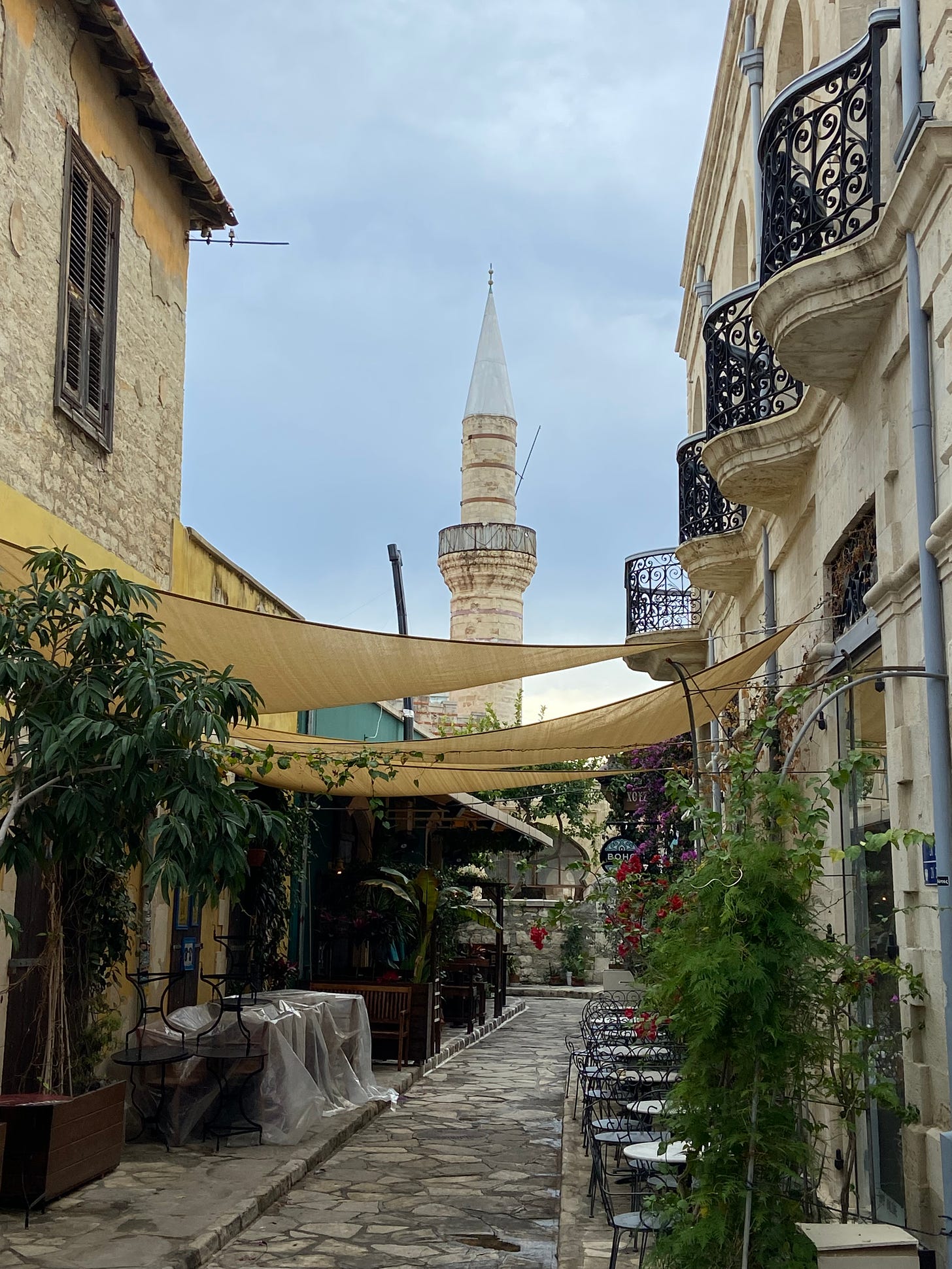
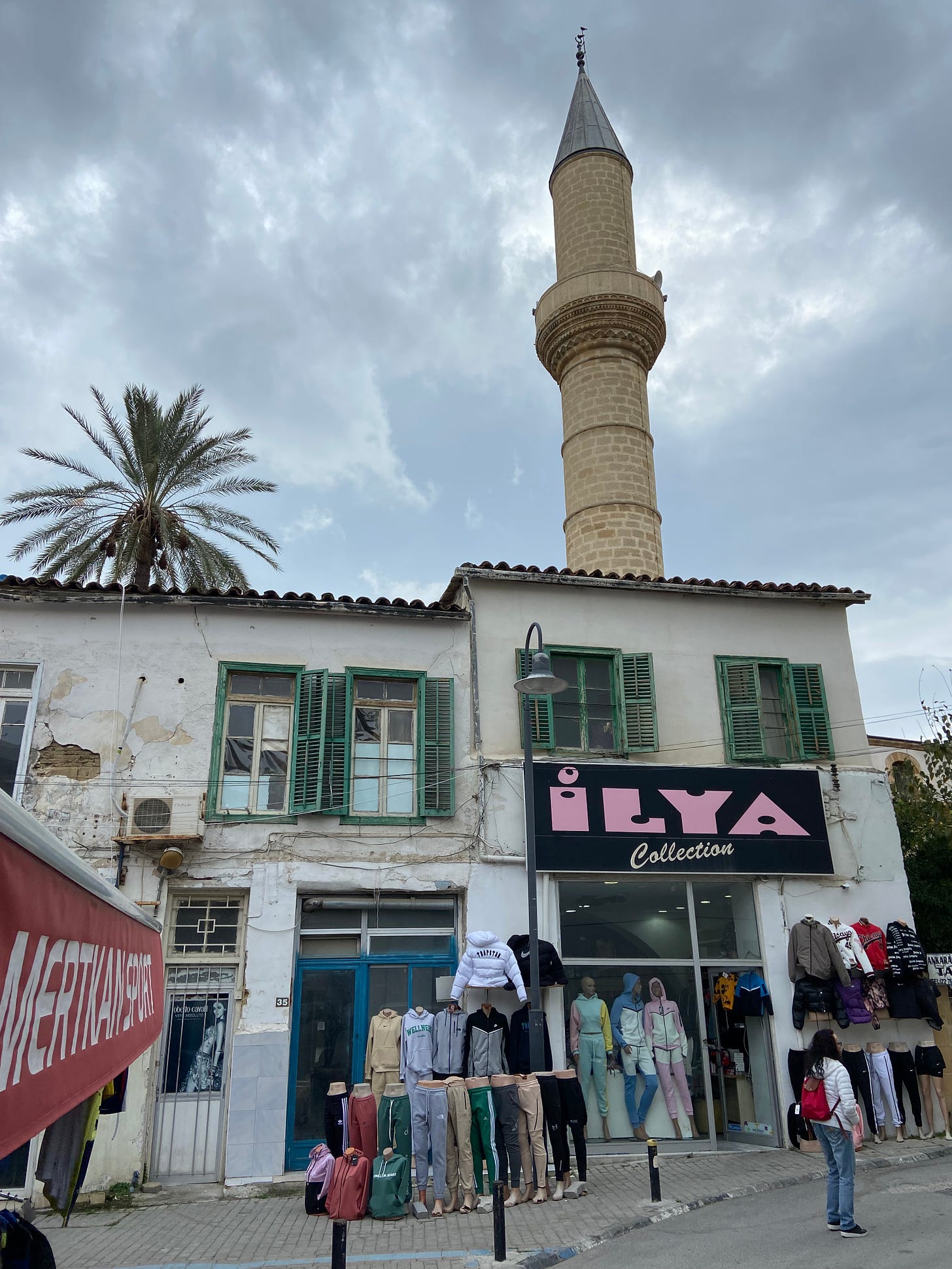
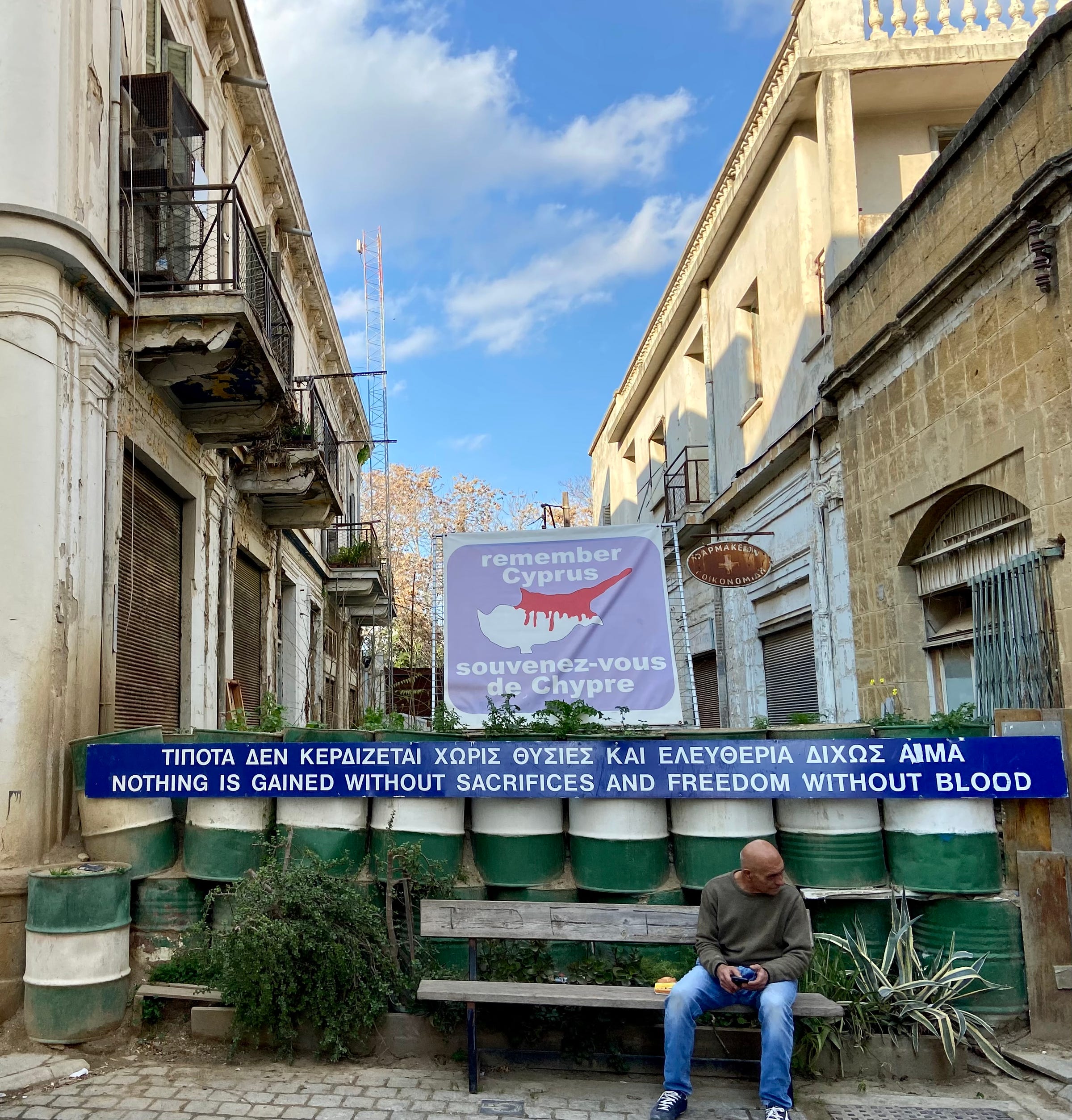
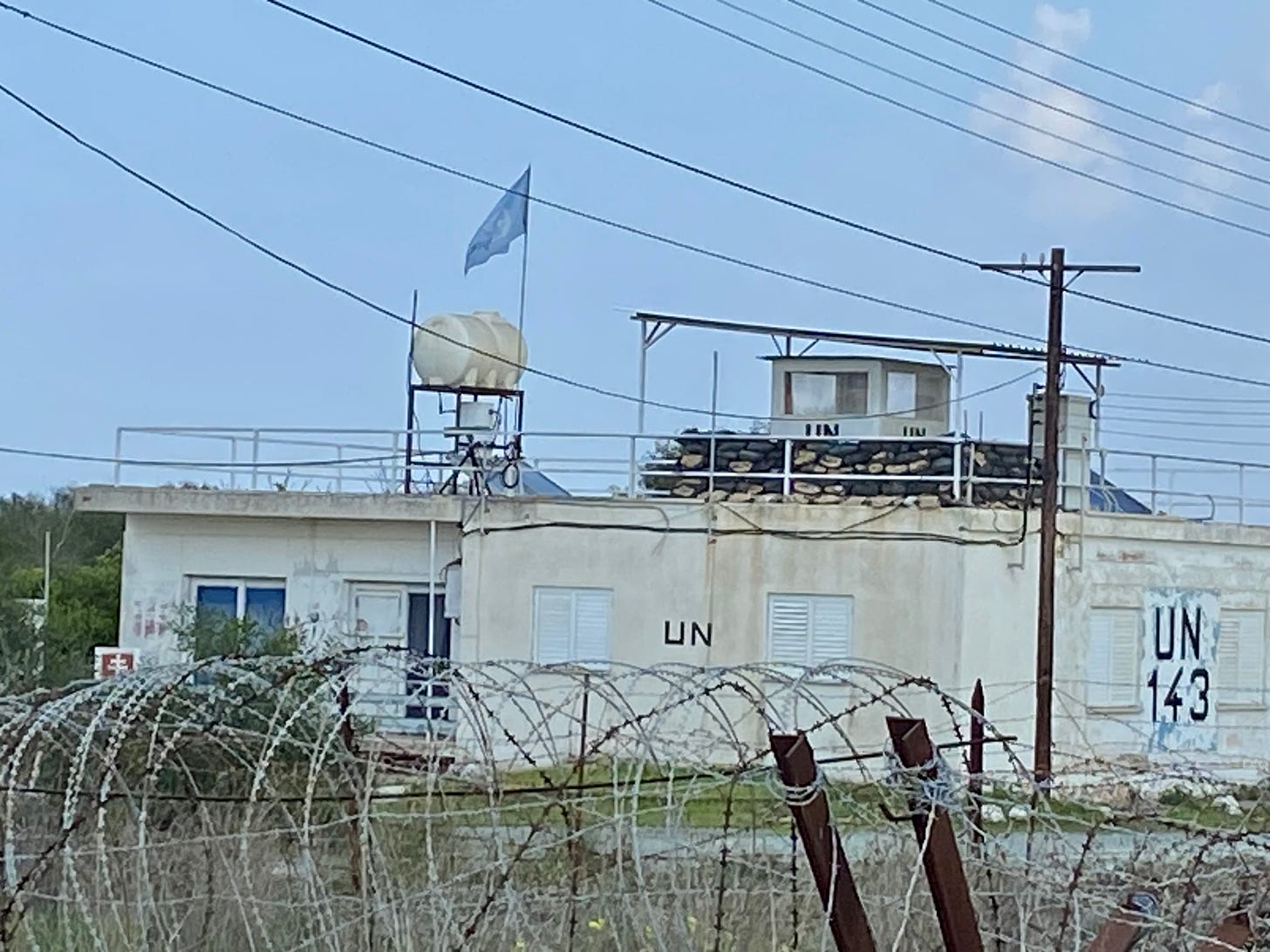

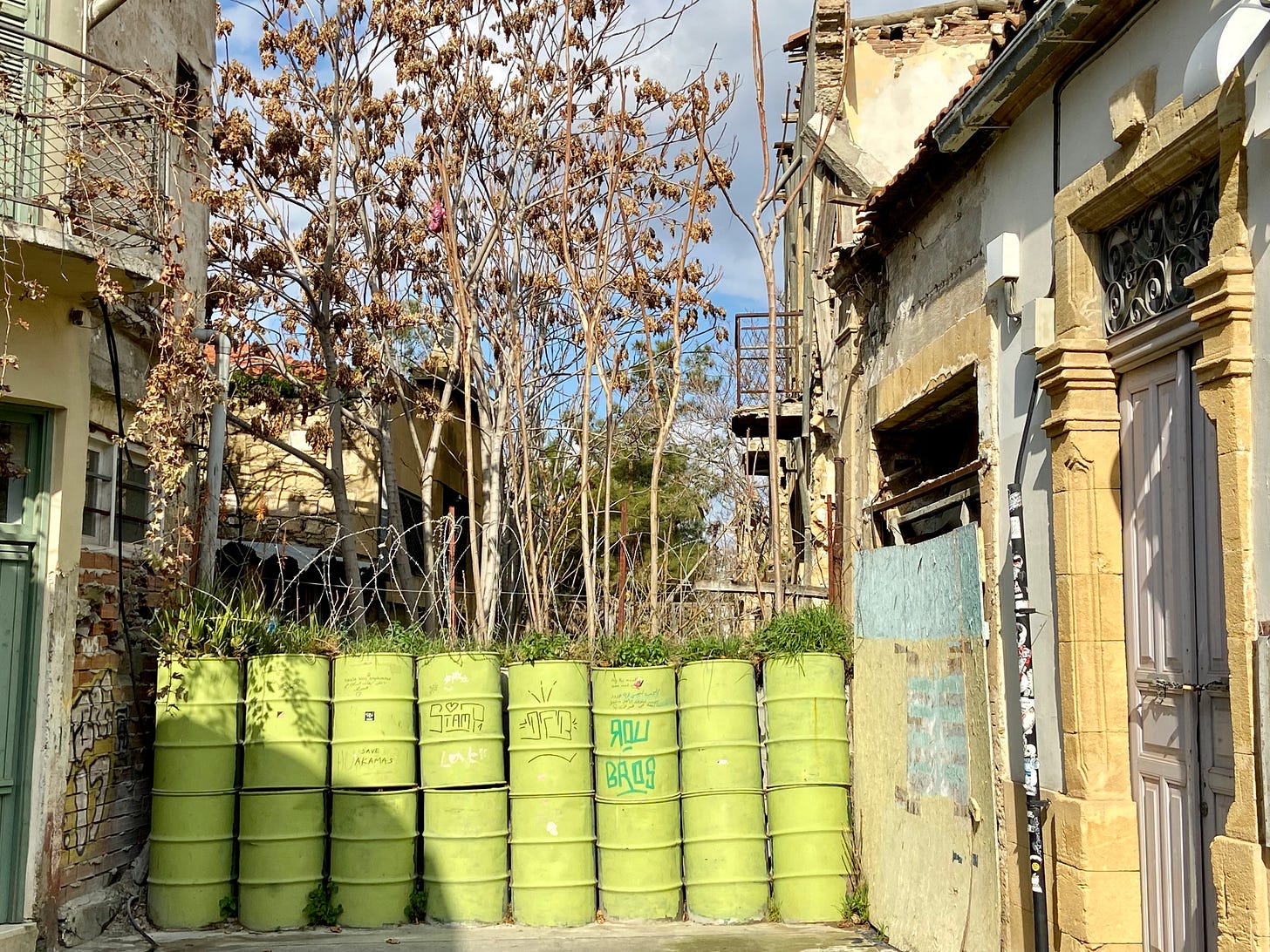
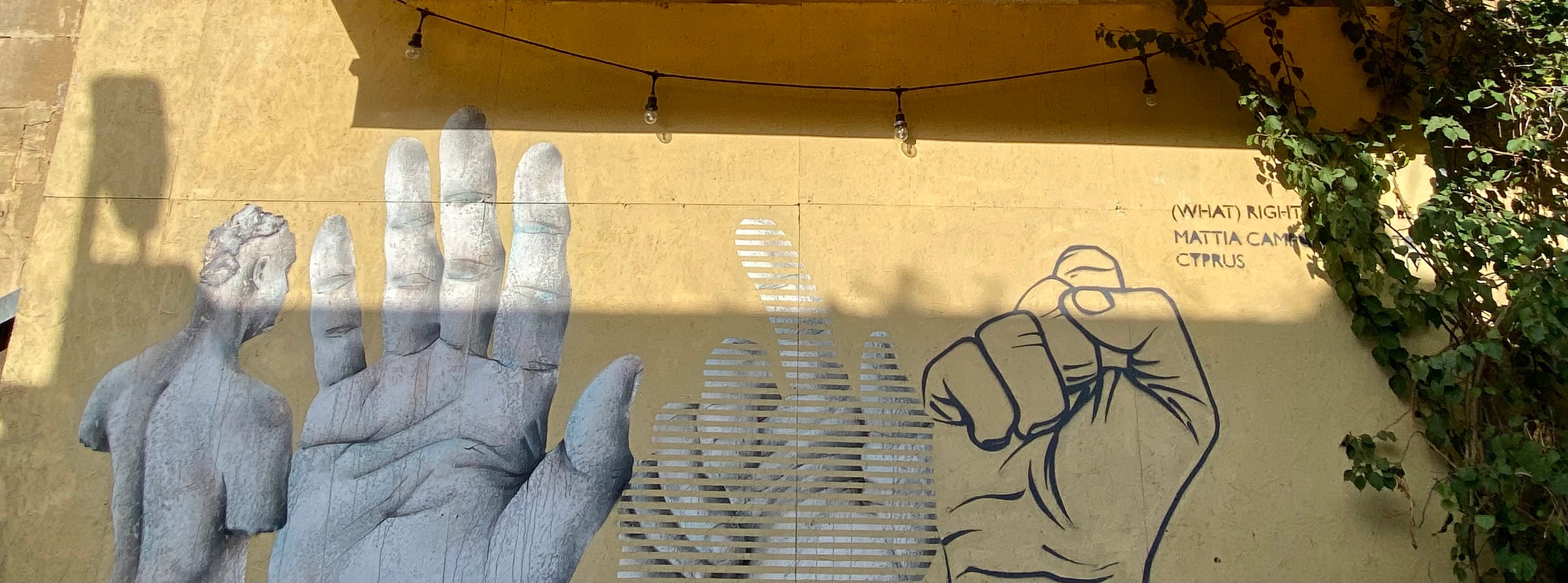
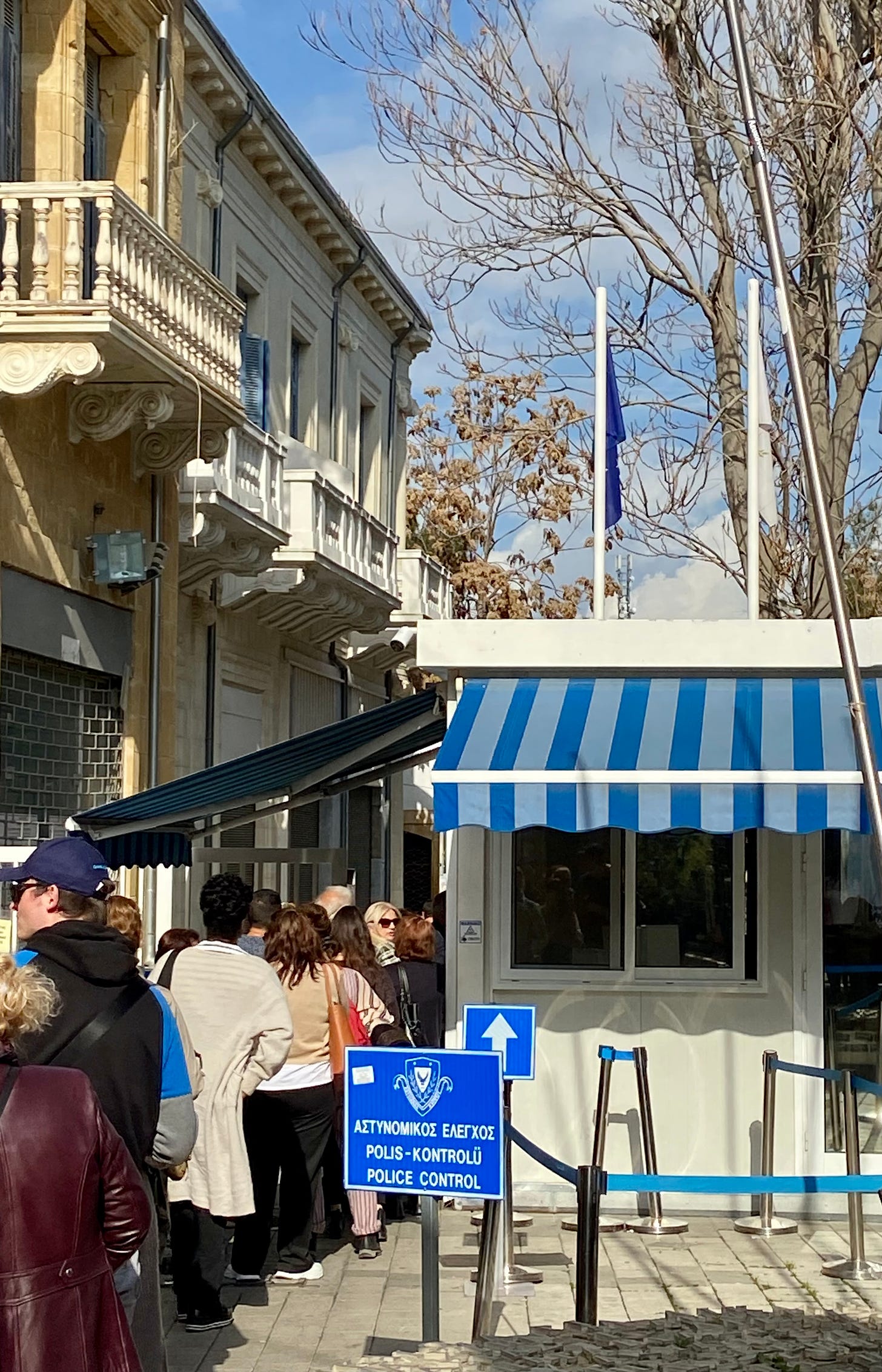
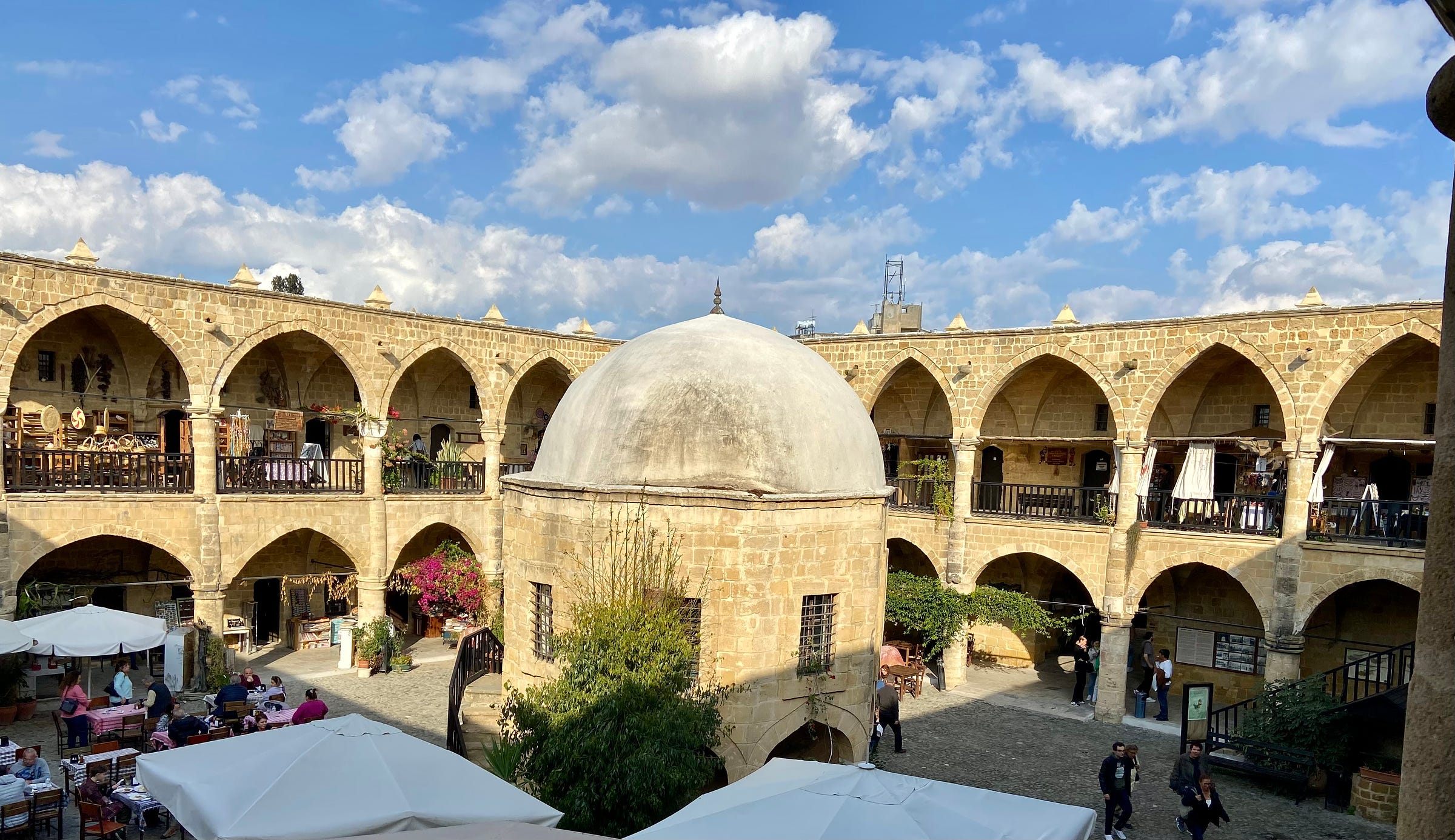
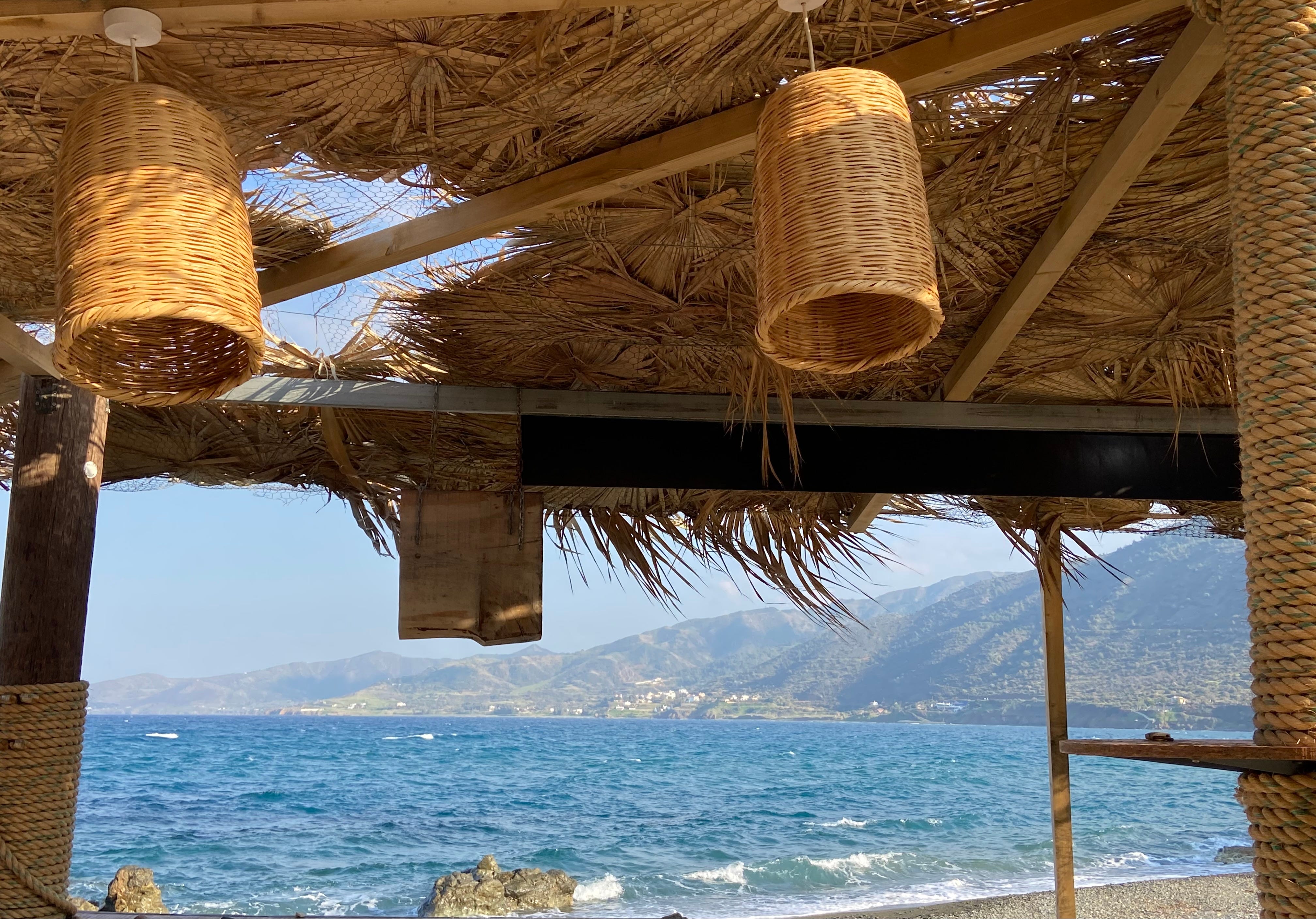











Great story, albeit sad in so many ways. Reminds me very strongly of crossing from a vibrant West Berlin into the East before the wall came down. Advised by a girl we met in Hamburg not to take a car through Checkpoint Charlie (much as I wanted to be able to say that I had done) we crossed on foot and the sensation of entering a more dour and downbeat world was palpable. No street life to speak of, and a real sense of fear and unease on everyone's faces. On the other hand it also led to one of the most legendary meals I've ever eaten, in a restaurant full of East German and Russian soldiers under the Rathaus.
As someone who thinks he knows this island well you always manage to find new ways to shine a light and illuminate its personality and it’s culture. Thank you for your stories about this amazing place with all its complexities